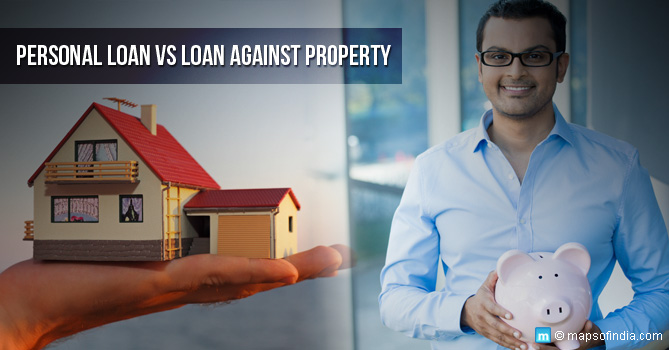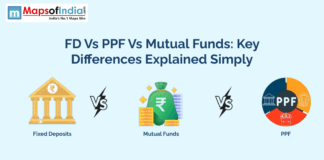What is a Personal Loan?
A personal loan is a loan often extended by a bank or a financial institution to meet the financial needs such as medical expenses, wedding or vacation funding, house repairs or renovations, debt consolidation etc. The end usage of the money extended as personal loan is not monitored by the lending bank or financial institution. A personal loan is usually extended on the basis of a person’s credit history and the borrower is expected to repay the loan from personal income. Such a loan is often extended without any of the borrower’s asset being pledged as collateral.
What is Loan against Property?
As the name suggests, a loan against property (LAP) is a loan raised by mortgaging the property to a bank or a financial institution. Historically, in India loan against property signifies loan against the borrower’s real estate asset. In more recent times, however, gold (bonds and jewellery), government securities and bonds, and even equities are considered viable assets against which loans are extended. In case of LAP, the lending institution (bank) holds the asset as collateral and extends some 40 to 70 percent of its market value as loan. If the loan is made for the purchase of property, the property acquired by it is mortgaged till the loan is repaid.
Personal Loan Vs Loan Against Property
In many cases, the decision to opt for a personal loan or a loan against a property is often a personal one or may depend on factors such as availability and ease of obtaining credit etc. There are a number of similarities and important differences between the two that you must be aware of before opting for either.
In general, banks and lending institutions do not specify the end utility of the money borrowed by way of personal loans and loans against property. Only in rare cases do lending financial institutions specify the usage of a LAP. This means that in most cases, the borrower may approach a bank or lender for either LAP or personal loan with a loan requirement without the need for stipulating how the loan amount will be spent.
Apart from this, the two loans differ in many ways.
- A personal loan is a loan that the bank or financial institution extends on the personal recognizance of the borrower after studying his/her salary or income, credit worthiness, and previous loan track record (if any). There is no need for a guarantor or a security to be able to raise the personal loan. In case of the LAP, however, your asset (usually real estate property) will be mortgaged and the loan extended against it. This means that your property could be forfeited if you fail to repay the loan.
- A personal loan is a non-secure loan for a bank, this means that in case of a failure to repay, the bank has no collateral or guarantor who can assure repayment. This makes the process of taking out a personal loan subject to much scrutiny. Taking out an LAP, on the other hand is much easier, since the loan amount is secure. It is a mere fraction of the value of the asset mortgaged.
- Personal loans are usually taken out on smaller amounts of loans (averaging INR 3-5 lakhs). These are loans to meet at the borrower’s emergency needs such as medical expenses or to meet needs when other loans are not available eg. wedding expenses, children’s education etc. Loan against property is usually a much larger amount in comparison to a personal loan. Most institutions lend about 40 percent to 70 percent of the value of the mortgaged property.
- Due to the increased risks to the bank or the lending institution, interest rates on personal loans are often higher than loans against mortgage of property. LAP interest rates range from 12 percent to about 16 percent. Personal loan interest rates range from 16 percent to 21 percent.
- The Equated Monthly Installments (EMI) on LAP is also much lower in comparison to personal loans.
- Personal loans have a maximum repayment term of 5 years or 60 months. LAP repayment terms may extend up to 15 years.
What documents will I need for a LAP?
Most lending institutions will require the following documents before extending a LAP:
- Application form with photograph
- Proof of Identity
- Proof of Residence
- Salary slips/Proof of Business Existence
- 6 months bank statements
- IT returns for 3 years (individual and business if self-employed)
- Processing fee (payable by cheque)
In most cases, the choice of taking out a personal loan or a loan against property will depend on the borrower’s need, availability of property for mortgage, lending institution’s regulations, end purpose of the loan, and urgency. In both cases, it is best if the borrower approaches a nationalized bank or a bank of repute rather than depending on personal lenders of shady repute.






